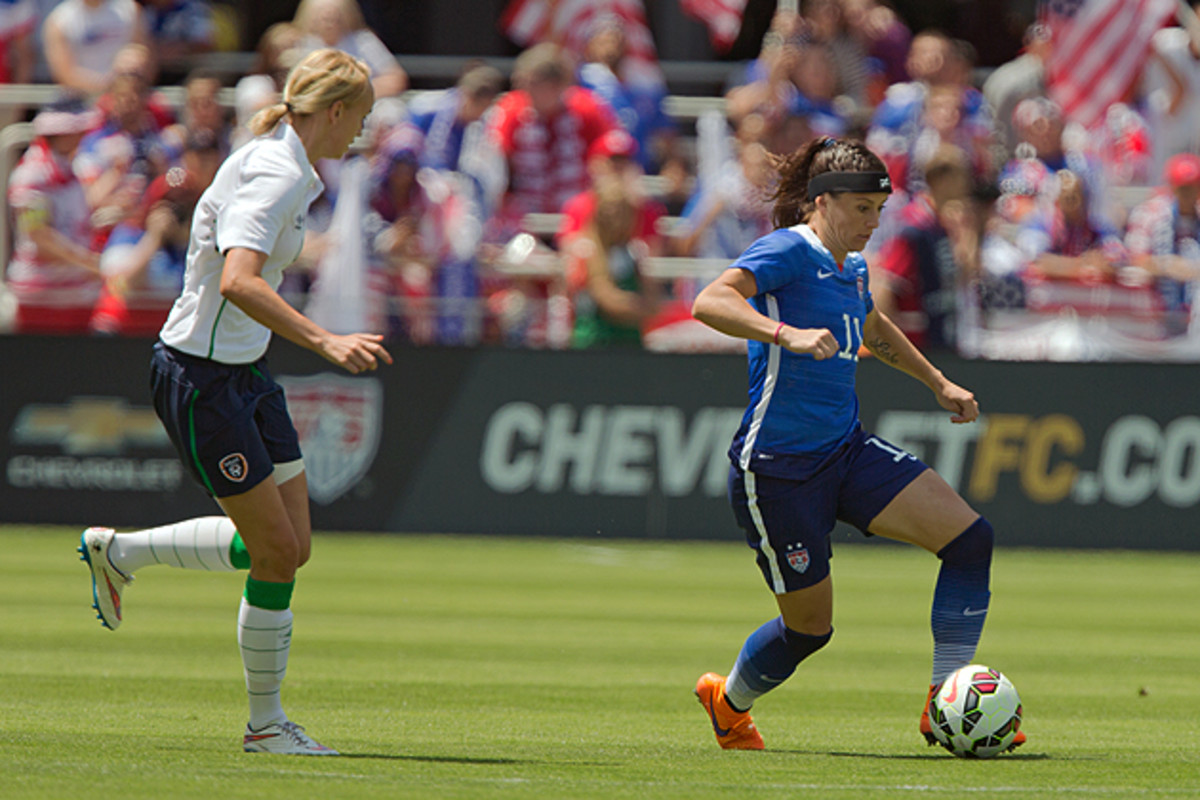USWNT players adopting protective headgear for the Women's World Cup

It wasn’t USWNT defender Ali Krieger’s idea to wear protective headgear the first time she did leading up to the Women’s World Cup. After two concussions, though, the coaching staff urged her to try something that would give her an added layer of protection on the field. Now, Krieger, who has begun wearing something called Unequal Halo, welcomes the opportunity to stay protected as the USWNT makes a run for at the World Cup title.
“I had never worn protective headgear before,” Krieger says. “The fact that [the Halo] helps protect me and does not affect ball control made the decision easy to continue wearing it in the World Cup and beyond. I have learned the hard way that concussions are not fun.”
Rob Vito, CEO of Unequal Technologies, tells SI.com he was thrilled when the USWNT called him to build head protection for Krieger. “We were honored to help the team,” he says.
Unequal Technologies, a company that is both ASTM certified and FIFA approved for protective headgear, also builds under-hat protection for pitchers, under-helmet protection for football players and even body protection—as worn by Tony Romo. So when they heard the USWNT needed a fix, the company took on the task by combining its 85 worldwide patents that include the use of high-tensile strain fibers, Kevlar and an Accelleron composite, for ballistic-strength protection against concussions.
Women's World Cup: Going inside the diet of a USWNT soccer player
“When you are taking ballistic military-grade TriDur [material] that is used to stop bullets and put it into sports protection, of course you are having dramatic effects,” Vito says. “It was originally designed to stop the greatest force of all. Of course we can handle a baseball or football coming in at a reduced speed.”
Now players from the U.S., Mexico and Ecuador don the Unequal Halo soccer headband. Unequal started creating its soccer-specific line by working with the women’s soccer team at the University of Georgia and then later by consulting with coaches at UCLA to find the right mix.
In the end, this TriDur construction, at 10 millimeters thick, provides 40 square inches of protection. When force hits the Halo, instead of pinpointing directly into the head at the point of impact, the energy, Vito says, disperses throughout the entirety of the headband.
Vito uses an example of two teen soccer players both going for a header and instead knocking heads. Both went down and the girl wearing an Unequal band got up and went back into the game, while the other girl went to the hospital with a concussion. “Unequal dissipated that (energy) around the full radius of the head,” Vito says. “The other girl got a pinpoint above her temple where all [energy] units went in at that point.”

Krieger says having the headband on gives her “confidence coming back from my most recent concussion.”
But the Unequal was about more than the obvious concussion-causing collisions. Vito sites studies that say “sub concussive” hits build up over time. Equivalent to hitting a granite countertop with a hammer, where the first hit doesn’t cause damage, but by three hits you start seeing spider cracks and by hit eight or nine fragments start shooting out. “That is sub concussive,” Vito says. “When the head is stopping a 70 mile per hour object, like a soccer ball, that energy is a buck of water. It has to go somewhere.”
And while athletes don’t necessarily feel each of those smaller hits, the cumulative effect are, in essence, “fracturing your resistance and building up over time.”
Vito says that Krieger specifically asked for a headband-like device contoured over her ears. Unequal also rounded the top to improve performance and accuracy on headers.
Teammate Carli Lloyd saw Krieger’s success and has discussed adding Unequal to her on-field attire.
“It is now cool to wear protection,” Vito says. “There was always this stigma about wearing protection. We want to be proactive, we want to get ahead of it.”
Tim Newcomb covers stadiums, design and gear for Sports Illustrated. Follow him on Twitter at @tdnewcomb.
